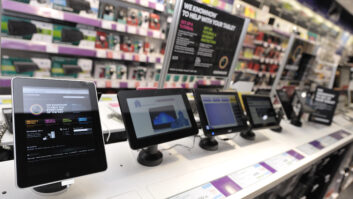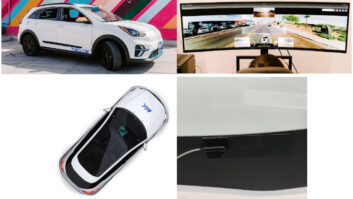New York —While U.S. forces battled jihadists overseas, the consumer electronics industry slashed its way through several of its own crusades during the contentious year of 2002.
Hollywood and the CE industry sparred over appropriate copy protection as MP3 player sales soared. Congress, broadcasters and The Consumer Electronics Association (CEA) fought relentlessly over analog cutoff dates, the definition of fair use, tuner mandates and cable interoperability. Carly Fiorina battled the heirs of Hewlett and Packard to merge the eponymous HP with rival Compaq. DirecTV and EchoStar battled the government for the right to merge. The clash over satellite radio was joined as Sirius Satellite Radio was launched nationally.
Indeed, the year even carried the seeds for what Saddam Hussein (still in power) would undoubtedly have dubbed “the mother of all battles” in the CE business — the announcement of the Blu-ray Disc specs and Toshiba’s announcement later in the year that it would develop a rival format, HD DVD.
Turn randomly to any page that year, and more likely than not you would see then-FCC chairman Michael Powell juxtaposed (often glaringly) with CEA president/CEO Gary Shapiro as the two navigated the trenches of tuner mandates for digital TVs. Shapiro labeled such mandates a “TV tax” and Powell called such rhetoric “ridiculous.”
Yet beneath the verbal duel, sales of DTVs continued to swell, creating what strategists call “facts on the ground” and causing a worried Mitsubishi executive to wonder if consumers were investing in technology that would be rendered obsolete by subsequent government decisions. And decisions were made.
Forty years after Congress passed the All-Channel Receiver Act of 1962 (which decreed that TV receivers be capable of UHF as well as VHF channel reception) TV set makers were told they must include DTV reception in all their products, albeit on a phased-in basis to soften the costs for both manufacturer and consumer. An unsuccessful court challenge ensued from the CEA.
Fears were allayed somewhat when, by year’s end, CEA and NCTA agreed on standards for national digital cable interoperability and the first “cable-ready” sets were previewed by Panasonic.
The government was also pushing back against two satellite television giants, DirecTV and Echo Star. The companies were attempting to merge to better compete against cable TV providers, but threw in the towel in December after repeated attempts to repackage the deal failed to please regulators, who read into the merger the makings of a monopoly.
Speaking of satellites, Sirius Satellite Radio launched nationally in 2002, bringing dealers a raft of new car hardware and initiating the still-fierce “subscriber wars” with rival XM.
Back on Earth, another hard-fought mega-merger did end successfully. In a $25 billion dollar deal pushed by CEO Carly Fiorina over the objections of the company’s surviving name sakes, HP merged with Compaq. The deal was the biggest in tech history, but was mainly geared at helping HP shore up its enterprise PC business. It also provided HP with the popular iPaq handheld which it pushed, alongside a broadened imaging lineup, into consumer channels.
The music industry was also pushing back against iTunes and illicit downloading, launching approved digital download services. In fact, the widely reviled (in the music industry) Napster was acquired by music giant Bertlesmann in an $8 million deal to be converted into “a paid service.” College students reportedly wore black arm bands for months thereafter.
The other music phenomenon, Apple’s iPod, took a huge leap toward wider adoption with the ability to interface with Windows.
But perhaps the most relevant of all of 2002’s fractious battles was the one just begun. TWICE reported in February that nine companies had agreed on specifications for a high-definition optical disc — called Blu-ray — that would bring HD movies and enormous storage capacities to consumer’s homes. By August, however, Toshiba and NEC had answered with their own proposal: HD DVD. Even Warner Brothers got in on the act the following month announcing it was exploring a format called HD/DVD-9. Retail brows were universally furrowing over the thought of a sequel to Betamax vs. VHS.
2002 was also very much a year of consolidating the change of 2001. The industry absorbed the 9/11 terror attacks and resultant recession. Not everyone survived unscathed (Kmart, for instance, closed 283 stores and sought Chapter 11 bankruptcy protection, while 800.com was absorbed by Circuit City), yet the industry as a whole posted $96 billion in factory sales. TWICE’s Top 100 retailers broke (for the first time) the $100 billion sales mark, notching $101.4 billion in sales as consumers eschewed air travel for flat-panel TVs and DVD players. Best Buy remained the top retailer.
The nation’s top CE dealer also experienced a significant transition as Best Buy founder Dick Schulze relinquished day-to-day operational duties of his 35-year-old retail chain to his new CEO, Brad Anderson. Editor Alan Wolf spoke with Schulze about his career, wondering what kept him toiling in business long after achieving all the material wealth one could seemingly desire. “It was a sense of achievement and the determination to learn,” Schulze said.













